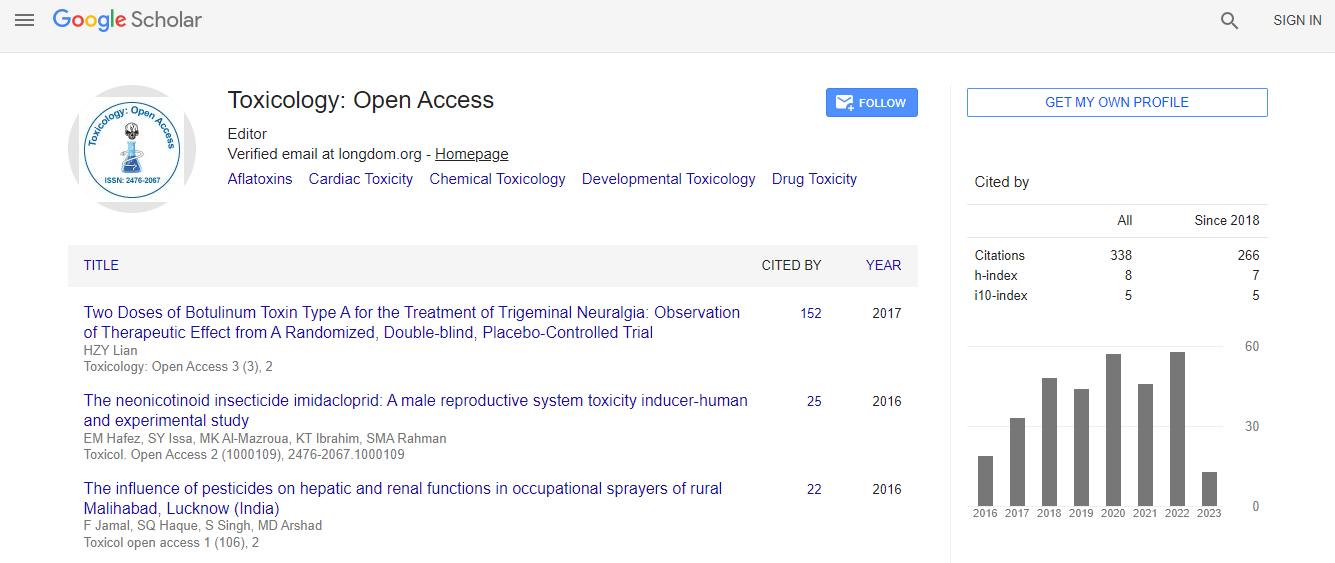Our Group organises 3000+ Global Conferenceseries Events every year across USA, Europe & Asia with support from 1000 more scientific Societies and Publishes 700+ Open Access Journals which contains over 50000 eminent personalities, reputed scientists as editorial board members.
Open Access Journals gaining more Readers and Citations
700 Journals and 15,000,000 Readers Each Journal is getting 25,000+ Readers
Google Scholar citation report
Citations : 336
Toxicology: Open Access received 336 citations as per Google Scholar report
Indexed In
- Google Scholar
- RefSeek
- Hamdard University
- EBSCO A-Z
- Geneva Foundation for Medical Education and Research
- Euro Pub
- ICMJE
Useful Links
Related Subjects
Share This Page
Differences between cytotoxicity of preservatives used in cosmetic industry determined on consecutive passages of senescent diploid human lung fibroblasts in vitro
20th World Congress on Toxicology and Pharmacology
Katarzyna Miranowicz-Dzierzawska, Lidia Zapor, Jolanta Skowron and Lilianna Marciniak
Central Institute for Labour Protection, Poland
ScientificTracks Abstracts: Toxicol Open Access
Abstract
Introduction & Aim: Cell culture system could be a useful model for aging-related changes. The aim of the study was to assess whether there are differences between the results of determination of preservatives cytotoxicity obtained on senescent cells in different age.Method: Experiments were conducted to determine the cytotoxicity of four preservatives: Methylparaben, propylparaben, 2-phenoxyethanol and benzalkonium chloride on subsequent passages of senescent human lung CCD-8Lu (ATCCÒ CCL- 201TM) fibroblasts. The tests were carried out in passages no. 10/18. Xenobiotics cytotoxicity was evaluated using two cell viability assays: MTT assay, determining metabolic activity of cells and NRU assay, assessing the integrity of cell membranes. The IC50 values were used as the main measure for comparing the cytotoxicity of tested compounds.
Results: The results showed that the preservatives can be ranked according to the increasing cytotoxic potency towards the tested human diploid lung fibroblasts: 2-phenoxyethanol
Conclusion: The passage number of diploid human lung fibroblasts had an important impact on the susceptibility of cells to preservatives. The test of the integrity of cell membranes (NRU) seems to be more appropriate to assess the cytotoxic effect of the investigated preservatives on diploid fibroblasts in different ages, which may be related to the mechanism of action of these compounds.
Biography
Katarzyna Miranowicz-Dzierżawska is currently working in Laboratory of Toxicology, a part of the Department of Chemical, Aerosol and Biological Hazards in the Central Institute for Labour Protection, National Research Institute. She has completed her graduation from Faculty of Pharmacy with Pharmaceutical Analysis specialization of the Medical University of Warsaw and PhD from Jagiellonian University, Cracow.
E-mail: kamir@ciop.pl

 Spanish
Spanish  Chinese
Chinese  Russian
Russian  German
German  French
French  Japanese
Japanese  Portuguese
Portuguese  Hindi
Hindi 